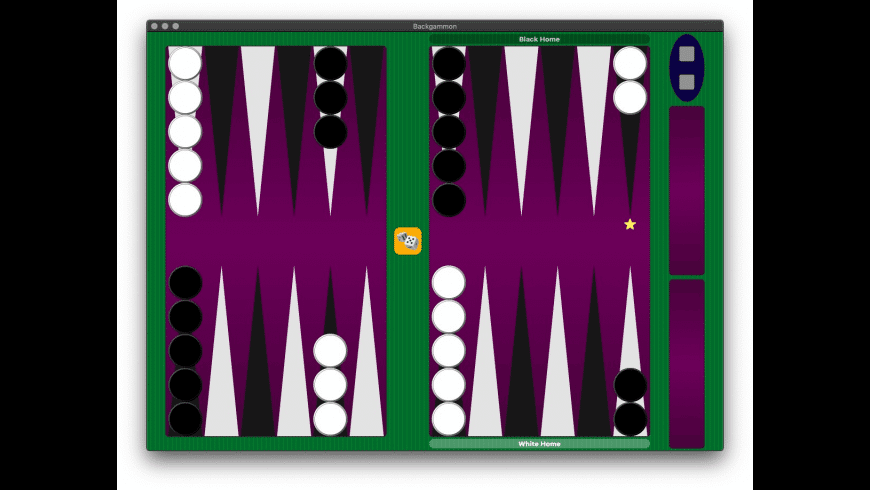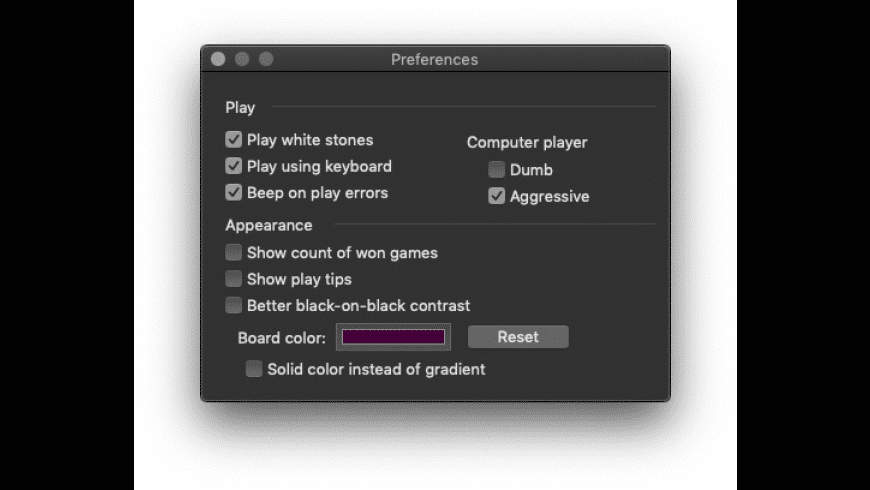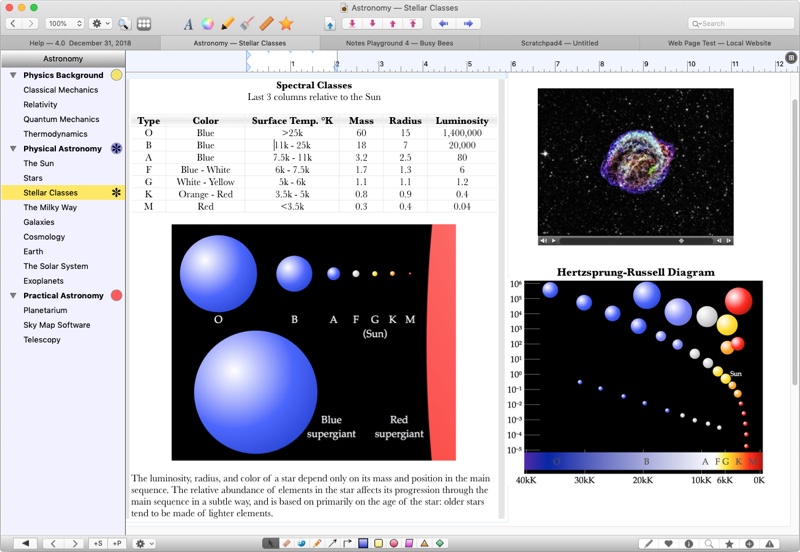The world's biggest backgammon site. Practise your skills and become a better player! Download this game from Microsoft Store for Windows 10, Windows 8.1. See screenshots, read the latest customer reviews, and compare ratings for Cribbage Free.

Backgammon is a game for two players, played on a board consisting of twenty-four narrow triangles called points. The triangles alternate in color and are grouped into four quadrants of six triangles each. The quadrants are referred to as a player’s home board and outer board, and the opponent’s home board and outer board. The home and outer boards are separated from each other by a ridge down the center of the board called the bar.
The points are numbered for either player starting in that player’s home board. The outermost point is the twenty-four point, which is also the opponent’s one point. Each player has fifteen checkers of his own color. The initial arrangement of checkers is: two on each player’s twenty-four point, five on each player’s thirteen point, three on each player’s eight point, and five on each player’s six point. Both players have their own pair of dice and a dice cup used for shaking. A doubling cube, with the numerals 2, 4, 8, 16, 32, and 64 on its faces, is used to keep track of the current stake of the game. |

| Object of the Game | ||
|
| Movement of the Checkers | ||
|
| Hitting and Entering | ||
|
| Bearing Off | ||
|
| Doubling | |
|
| Gammons and Backgammons | |
|
| Optional Rules | |
|
| Irregularities | |
|
Common Questions:
Q: Who goes first?
To decide who goes first, you and your opponent each roll one die. In the case of a tie, you both roll again. The player who rolls the higher number goes first. That player does not roll the dice again; they play the two numbers just rolled on their first turn.
Notice that the player who goes first never has doubles on their first turn because ties on the first roll are always broken.
Q: What is the object of the game?The object in backgammon is to move all of your checkers around the board into your home board and then bear them off. The first player to get all their checkers off the board is the winner. |
Q: What is the ace-point?

The ace-point is another name for the one-point, the last point you can move your checkers to before bearing them off. Your two farthest back checkers start on the opponent’s ace-point.
Q: Can I pass when it’s my turn?
No, you must play your roll if there is any legal way to do so. If you can’t play all of your numbers, you must play as many as you can. So if you roll and can only play three of your four 6’s, that’s what you must do.
Q: Is hit-and-run allowed (also known as “pick and pass”)?
Yes, if you hit a checker, you are allowed to run your hitter to safety. Here is an example:
| Whites rolls 5-2: White may hit Red’s checker on the five-point and then move his hitter to safety on the three-point. |
There are some variations of backgammon, played in the Middle East, where hit-and-run is not allowed in the player’s home board. But the standard game has no such restriction.
Q: What is a doubling cube?A doubling cube is a cubical block, a little larger than a regular die, with the numbers 2, 4, 8, 16, 32, and 64 printed on its faces. It is sometimes simply called the cube. The purpose is to allow players to bet on the game as they are playing. |
Q: How do you use a doubling cube?At the beginning of the game, the doubling cube is placed halfway between the players, either on the bar or at the side of the board, with the number 64 face up. The 64 means that the stakes have not been doubled yet. (Most doubling cubes do not have a 1, so the number 64 is understood to represent 1) The position of the cube, halfway between the players, indicates that both players have access to it. That is, either player can make the first double. At any point during the game, a player who thinks he has a sufficient advantage may double the stakes. He can do this only at the beginning of his turn, before he has rolled the dice. When a double is offered, the opponent may refuse the double, in which case he resigns the game and forfeits the current stakes. The current stakes is the value of the cube before the double is offered, in this case one point. If the opponent doesn’t want to resign, he may accept the double, and agree to continue play at double the previous stakes. He places the cube on his side of the board with the number 2 face up. The number 2 represents the fact that the stakes are now doubled. The position of the cube means that player now owns the doubling cube and only he may make the next double. If the game later turns around and the player who owns the cube feels he now has an advantage, he may redouble the stakes to 4. His opponent may refuse and give up the current stakes (now two units) or he may accept and continue play at quadruple the initial stakes. There is no limit to the number of doubles and redoubles in a single game, except that no player may double twice in a row. At the end of the game, the loser pays the winner the value of the doubling cube in whatever units they have agreed to play for. For example, if playing for one dollar a point and the doubling cube shows 4, then the loser pays the winner four dollars. In the case of a gammon or backgammon, this amount is doubled or tripled. |
| Yes, you can double at the start of any turn. You have to be alert, though; your opponent, seeing that you can’t move, may roll his dice without waiting to see what you do. Just ask him to “wait, please” as he picks up his dice while you decide whether or not to double. |
Some people play that if the two players roll the same number on the first roll of the game, then the doubling cube is automatically turned to 2. The cube stays in the middle but now the first voluntary double of the game will be offered at 4. If the players roll the same number again, then the cube is turned up another notch, though players often agree to limit the number of automatic doubles to one per game. |
| Introduction | |
|
Q: What is the Crawford rule?

If you are playing a match up to n points and one player reaches n − 1 points, the Crawford rule says that the doubling cube is out of play for one game. This one game without doubling is called the Crawford game. After the Crawford game, the doubling cube is back in play again. The Crawford rule is a standard part of match play.
| Match to 5 | Score | |||
| White | Black | |||
| Game 1: | White wins 2 points | 2 | 0 | Doubling Allowed |
| Game 2: | Black wins 1 point | 2 | 1 | |
| Game 3: | White wins 2 points | 4 | 1 | |
| Game 4: | Black wins 1 point | 4 | 2 | Crawford Game |
| Game 5: | Black wins 2 points | 4 | 4 | Doubling Allowed |
| Game 6: | White wins 2 points | 6 | 4 | |
In this example, White and Black are playing a 5-point match. After three games, White has 4 points, one short of what he needs for the match. That triggers the Crawford rule, and no doubling is allowed in the next game, Game 4.
Growly Backgammon Free
The idea behind the rule is that without restrictions on doubling, the player who is behind in the match would double at his first opportunity every game. This reduces the number of games needed to win the match, lessening the value of the points held by the player who is winning. On the other hand, if the cube were taken out of play completely, the player who is behind in the match would have to win all his remaining points without any help from the doubling cube at all. The Crawford rule is an intelligent compromise. The Crawford rule was devised by John R. Crawford, co-author of The Backgammon Book.
Q: What is a chouette?
Chouette is a social form of backgammon for three or more players. One player, the box, plays on a single board against all the others who form a team lead by a captain.
To determine the order of play, players each throw one die, and rerolls are used as needed to break ties. The player rolling highest becomes the box; second highest becomes the captain of the team playing against the box. The captains plays for the team, and has the final say on all checker-play decisions.
When the box wins a game, he collects from each team member and retains his position as the box. The captain goes to the back of the line and the next player on the team becomes the new captain.
When the team wins a game, the box pays off to each team member and goes to the end of the line. The captain becomes the new box, and the next player in line becomes the new captain.
Players can leave or join a chouette at any time. A new player starts at the bottom of the rotation.
Q: What is a multiple-cube chouette?
A chouette may be played with either a single doubling cube or multiple cubes. In a single-cube game, the only decision that the members of the team make individually concerns takes. If the box doubles, each team member can decide on his own whether to play on or drop out. Those who drop out each pay off to the box and no longer participate as team advisers. If the captain drops out while there are others on the team who wish to play on, the captaincy is assumed by one of these players and the previous captain drops to the bottom of the rotation.
Growly Backgammon Free
Most chouettes today use multiple cubes. Each member of the team has his own doubling cube. The box can double the individual team members, and each team member can decide whether and when to double the box. With multiple cubes in play, it is possible for the box to win against some players while losing against others. So the question arises, when does a player get to keep the box? The usual rule is that a player retains the box if he defeats the captain.
Q: When is consulting allowed?
Customs vary as to the rights of the team. In some chouettes, they may consult freely as to how rolls should be played. Too much consulting, however, can really slow the game down, so many chouettes ban consulting. A popular compromise permits consultation only after the cube has been turned.
Used with permission from Backgammon Galore, http://www.bkgm.com.
